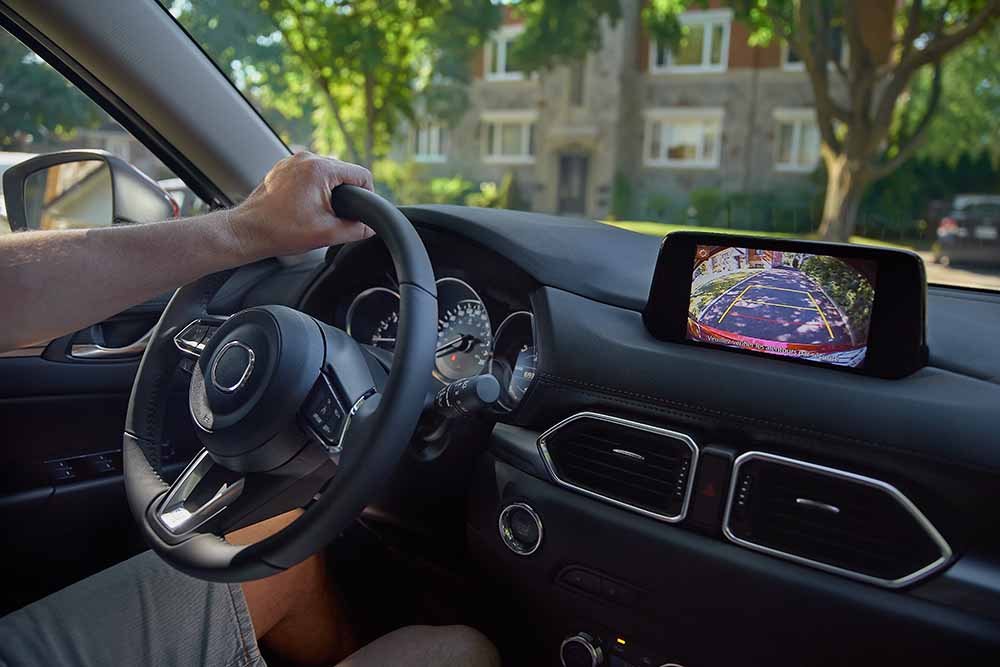
In this first part of our simple guide to complex new car safety features, we’ll explain the many advanced-driver-assistance-systems (ADAS) found in everything from sub-compact SUVs to luxury cars. In Part 2 of our guide, we’ll get into the very latest in high-tech car safety and explain what active driving assistance (ADA) is all about.
But first, please accept this pre-emptive apology for all the acronyms. Still, you’re probably better off learning about them now before trying to buy a new car, rather than in the dealership when the pressure is on.
What are advanced driver assistance systems (ADAS)? A note about naming What features fall under the ADAS umbrella, and what do they do?
What are advanced driver assistance systems (ADAS)?
Advanced driver assistance systems, or ADAS, is an umbrella term that refers to a long list of in-car safety features. Some ADAS — backup cameras, for example — aren’t especially “advanced” and can be found in every new car on sale today. Other safety features that fall under the ADAS umbrella aren’t so common — such as lane centring assistance — and are often found in luxury cars or as part of optional upgrade packages.
A note about naming
Be warned: car companies can market their vehicles’ advanced safety features under a multitude of different names.
In 2019, the American Automobiles Association (AAA) looked at
Since then, a number of organizations — including the AAA, J.D. Power, Consumer Reports, the U.S. National Safety Council and the Society of Automotive Engineers — have come together to propose a list of
What features fall under the ADAS umbrella, and what do they do?
Please remember that all of these ADAS features are a last resort - a backup system meant to assist a driver, not replace them. With that said, here’s a selection of high-tech safety features you’re likely to find in modern cars:
Forward Collision Warning: “Detects a potential collision with a vehicle ahead and alerts the driver. Some systems also provide alerts for pedestrians or other objects.”
Parking Collision Warning: “Detects objects close to the vehicle during parking maneuvers and notifies the driver.”
Rear Cross Traffic Warning: “Detects vehicles approaching from the side at the rear of the vehicle while in reverse gear and alerts the driver. Some systems also warn for pedestrians or other objects.”
Automatic Emergency Braking (AEB): “Detects potential collisions with a vehicle ahead, provides forward collision warning, and automatically brakes to avoid a collision or lessen the severity of impact. Some systems also detect pedestrians or other objects.”
Automatic Emergency Steering: “Detects potential collisions with a vehicle ahead and automatically steers to avoid or lessen the severity of impact. Some systems also detect pedestrians or other objects.”
Lane Keeping Assistance: “Provides steering support to assist the driver in keeping the vehicle in the lane. The system reacts only when the vehicle approaches or crosses a lane line or road edge.”
Lane Centring Assistance: “Provides steering support to assist the driver in continuously maintaining the vehicle at or near the centre of the lane.”
Reverse Automatic Emergency Braking: “Detects potential collisions while in reverse gear and automatically brakes to avoid or lessen the severity of impact. Some systems also detect pedestrians or other objects.”
Adaptive Cruise Control: “Cruise control that also assists with acceleration and/or braking to maintain a driver-selected gap to the vehicle in front. Some systems can come to a stop and continue [stop and go] while others cannot.”
Active Parking Assistance: “Assists with steering and potentially other functions during parking maneuvers. Driver may be required to accelerate, brake, and/or select gear position. Some systems are capable of parallel and/ or perpendicular parking. The driver must constantly supervise this support feature and maintain responsibility for parking.”
Trailer Assistance: “Assists the driver with visual guidance while backing towards a trailer or during backing maneuvers with a trailer attached. Some systems may provide additional images while driving or backing with a trailer. Some systems may provide steering assistance during backing maneuvers.”
Automatic High Beams: “Switches between high and low beam headlamps automatically based on lighting and traffic.”
Heads up display: “Projects information relevant to driving into the driver’s forward line of sight.”